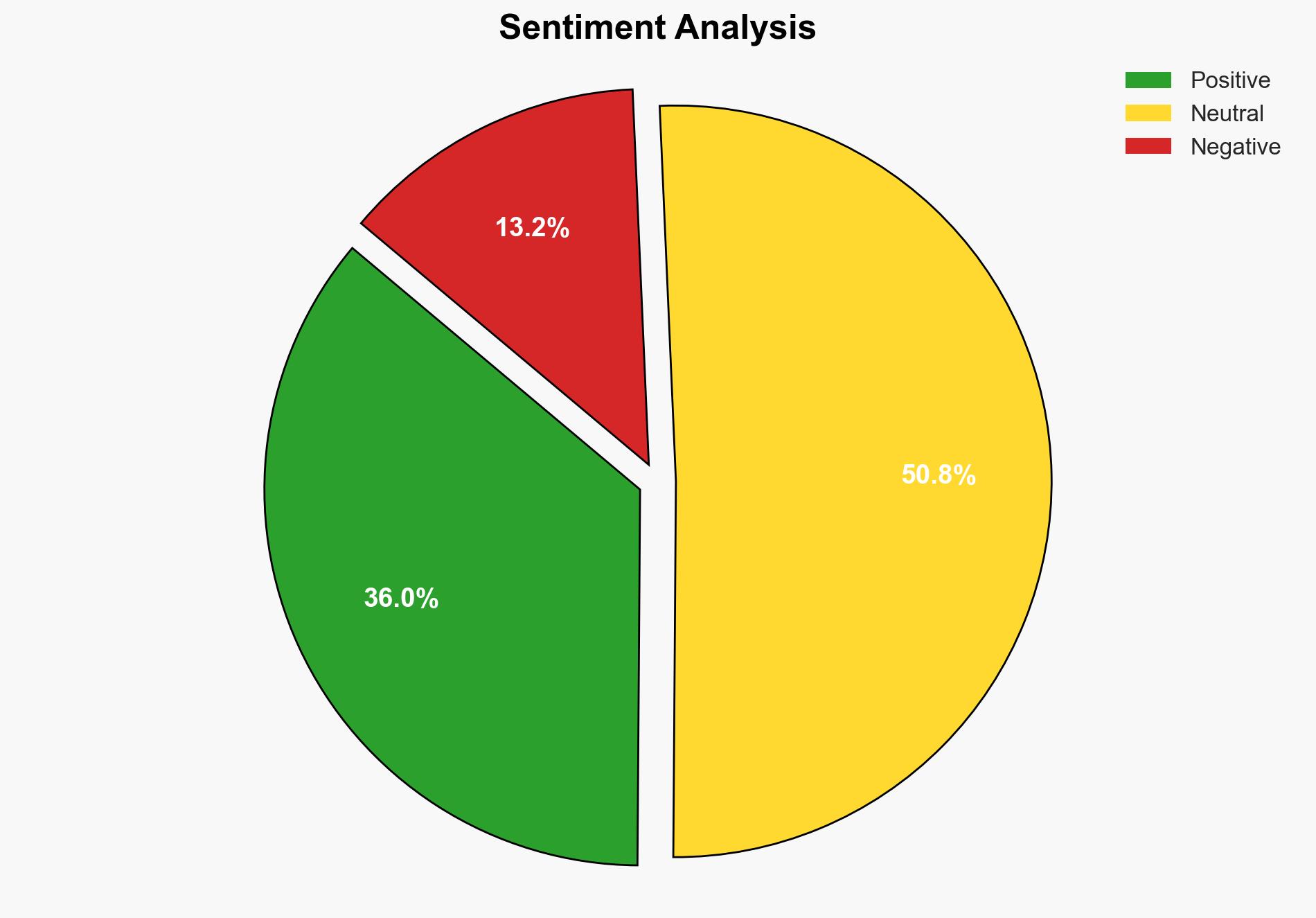Psychological Safety as a Competitive Edge – Age-of-product.com
Published on: 2025-02-27
Intelligence Report: Psychological Safety as a Competitive Edge – Age-of-product.com
1. BLUF (Bottom Line Up Front)
Psychological safety is identified as a critical factor for organizational success, particularly in agile teams. It enables innovation, adaptability, and effective communication, leading to a competitive edge. Misinterpretations of psychological safety can lead to dysfunctional team dynamics and undermine potential benefits. Organizations are advised to foster environments of mutual trust and respect to enhance performance and innovation.
2. Detailed Analysis
The following structured analytic techniques have been applied for this analysis:
Scenario Analysis
The analysis considers scenarios where organizations either embrace or neglect psychological safety. In scenarios where psychological safety is prioritized, teams are more innovative and resilient. Conversely, neglecting it can lead to stagnation and decreased competitiveness.
Key Assumptions Check
The assumption that psychological safety equates to comfort is challenged. True psychological safety involves candid communication and the ability to take risks without fear of interpersonal harm. Misunderstanding this can lead to artificial harmony and suppressed innovation.
Indicators Development
Indicators of effective psychological safety include open feedback channels, visible risk-taking, and the presence of healthy conflict. Conversely, indicators of poor psychological safety include conflict avoidance, lack of innovation, and high employee turnover.
3. Implications and Strategic Risks
Organizations that fail to implement psychological safety risk reduced innovation and competitiveness. This can impact national economic interests and regional stability as businesses struggle to adapt to changing markets. Additionally, the misinterpretation of psychological safety could lead to increased internal conflicts and reduced employee morale.
4. Recommendations and Outlook
Recommendations:
- Encourage open communication and risk-taking within teams to foster innovation.
- Implement training programs to educate leaders and teams on the true meaning of psychological safety.
- Develop organizational policies that support psychological safety as a core value.
Outlook:
In the best-case scenario, organizations that prioritize psychological safety will see increased innovation and market adaptability. In the worst-case scenario, neglecting psychological safety could lead to stagnation and competitive disadvantage. The most likely outcome is a gradual shift towards embracing psychological safety as more organizations recognize its benefits.
5. Key Individuals and Entities
The report references Amy Edmondson and Kim Scott as influential figures in the conceptualization and promotion of psychological safety and radical candor. Their contributions are pivotal in shaping current understanding and practices in organizational behavior.




